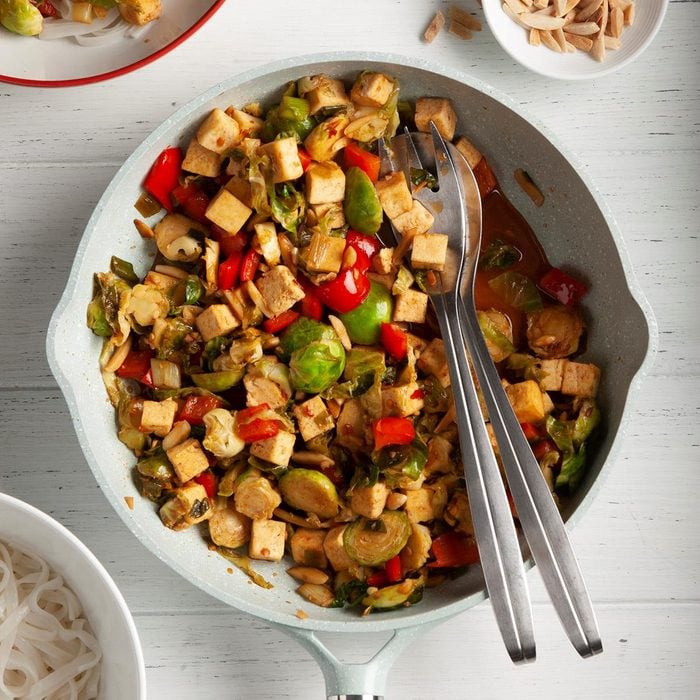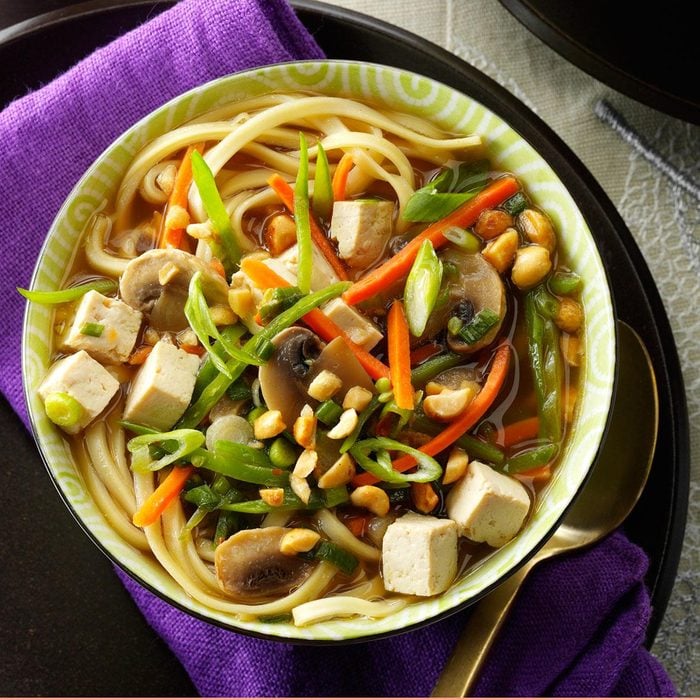The 8 Biggest Mistakes People Make When Cooking Tofu
Updated: May 19, 2023
If you hate tofu, it might just be because you've been cooking it wrong. Here are eight common mistakes, and some tips on how to treat tofu right.
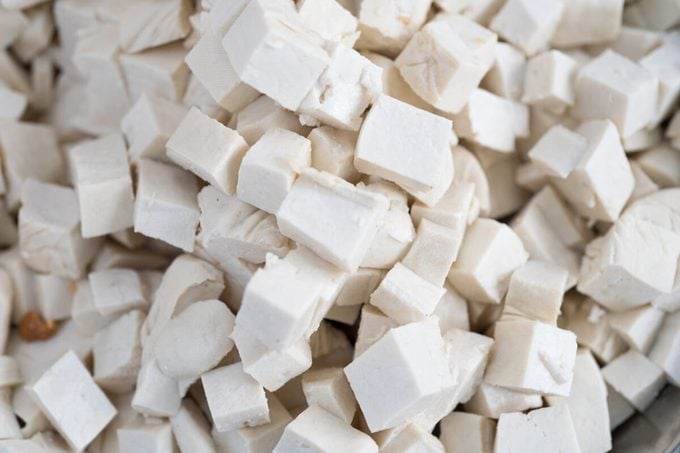
Let’s face it: Tofu has a bad reputation. Whenever you see an article naming the top 10 most hated foods in America, it’s a safe bet tofu will be on the list. If it’s an article about the single most hated food in America, it’s even odds that tofu will be the entire list. What’s sad is that reputation is unfairly gained, and is due to people not really knowing how to cook tofu.
But if Brussels sprouts, another food that has dominated the “most hated” lists for decades, can now enjoy a welcome and unfamiliar spot on the top-trending food lists, why not tofu? After all, Brussels sprouts themselves didn’t change; we just learned how to roast, sauté and steam them, instead of boiling them into bitter mush. So what mistakes are you making with tofu?
Oh, and if you haven’t been properly introduced yet, check out our guide—what is tofu?
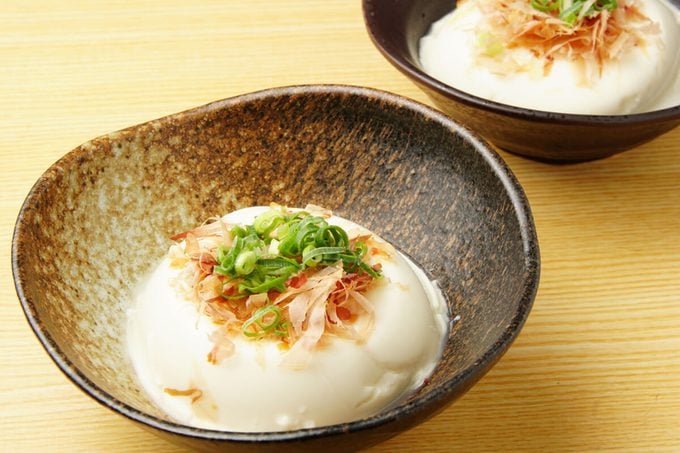
1. You bought the wrong kind
Tofu is made of condensed soy milk in a process very similar to cheesemaking. We tend to think immediately of pressed white blocks, but there’s a variety of tofu textures and densities on the market, and buying the wrong kind for your recipe will doom it before you begin. There are two main types—silken and block—with each having subcategories. Stay away from silken tofus (either soft or firm) if you want the tofu to maintain its shape (as in a stir-fry). Instead, use silken as a creamy, dairy-free addition to sauces, dressings, smoothies, desserts and soups, or when you want it crumbled over salads or scrambled, like eggs.
The more well-known block tofus are sold in firm squares that resemble feta cheese. Soft, medium, firm and extra-firm tofu, as their names suggest, are progressively more solid. Extra-firm is best for frying, sautéing or grilling. Medium-firm can be used for stir-frying, but may crumble a bit; but it’s great for baking or (intentional) crumbling. When in doubt, go for the firm or extra-firm tofu when cooking savory recipes like Vegetable Pad Thai or Crispy Tofu with Black Pepper Sauce.

2. You didn’t remove the liquid
After removing the tofu from its package, rinse it and then remove the water. For soft tofu, just drain it and blot it dry; but for medium, firm and extra-firm tofu, simple draining isn’t enough—you need to press the water out. Think of it this way: Tofu is porous, like a sponge. If the sponge is already full of water, there’s no room for anything else (like flavorful broth) to get inside. Plus, that water will release during cooking, playing havoc with your recipe.
To press, sandwich the tofu between multiple layers of paper towels, then between two plates. Weigh the top plate down with something heavy, like a flour canister, a cookbook or a cast-iron skillet. Drain the liquid about every 30 minutes. You’ll be amazed by how much liquid comes out. Slicing the tofu before pressing will help it drain faster, but after works too, and may be better if you’re working with medium-firm tofu that can be more difficult to cut cleanly.
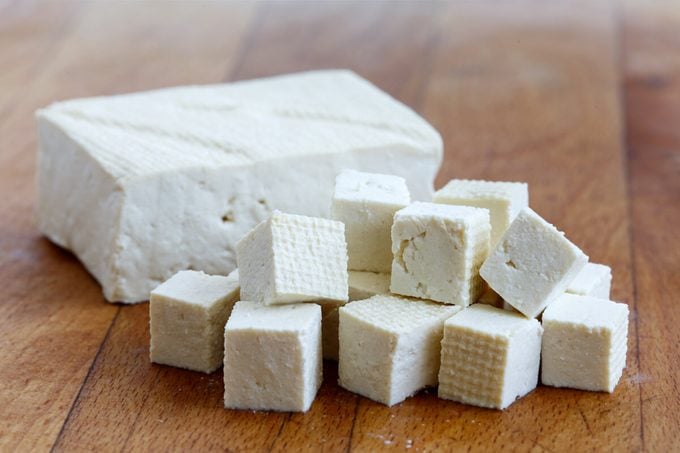
3. You cut it too large
Tofu cooks better in smaller sizes—either in cubes or in slices. A huge block of tofu is pretty much like a huge block of cheese; too large a piece, and you won’t get a pleasing flavor or texture.
(Try some of our best tofu recipes!)
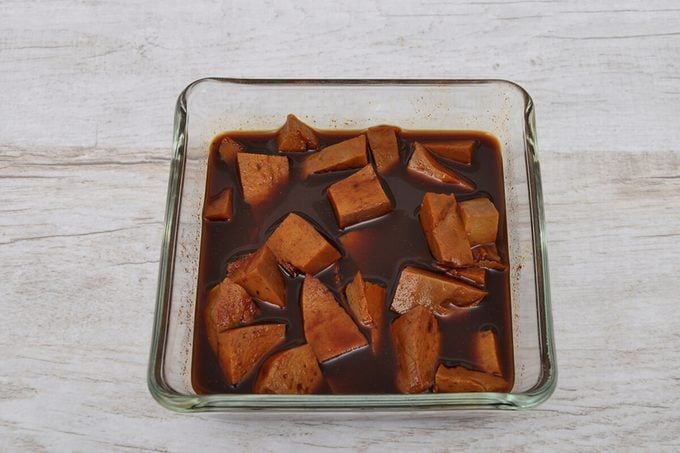
4. You used oil in your marinade
Even after thorough pressing, there will still be liquid in your tofu…more specifically, water. If you use an oil-based marinade, the oil and the water will form a natural barrier, keeping the marinade from penetrating. Instead, try flavor-packed oil-free liquids, such as lemon juice, vinegars, soy sauce or stock. And make sure you leave the tofu in the marinade long enough to soak up all the flavors…30 minutes is the very shortest time, with several hours or overnight as the ideal.
If you’re still disappointed with the flavor of your tofu, try using your liquid as a glaze instead of a marinade; add it to the pan after the tofu has cooked, toss and reduce, so the liquid turns into a thick sauce that clings to the crispy exterior.

5. You breaded it
If you want a nice, crispy exterior on your tofu, you may be tempted to treat it as you would a piece of fish or chicken…dredge it in a batter or a flour-based breading. But unlike fish or chicken, which can be patted dry, tofu has a more porous surface, and will release more water before the coating crisps—the perfect recipe for gumminess. Instead, just toss the tofu in a little bit of pure cornstarch or arrowroot powder, shake to remove the excess, and then fry in oil for a light, crisp, perfectly delicious exterior. And try a nice, flavorful oil, like sesame or coconut.
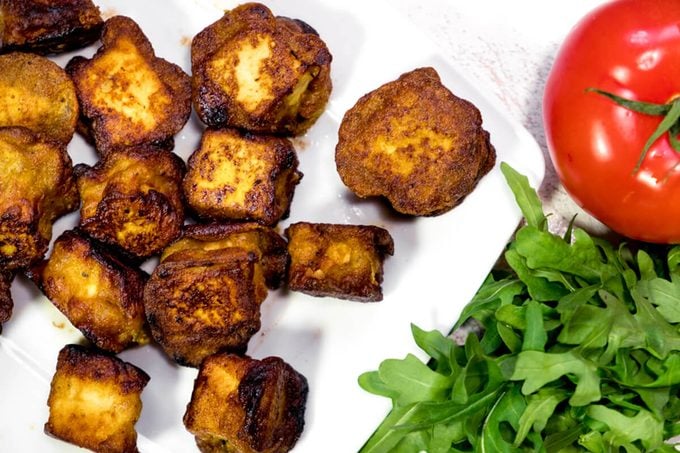
6. You didn’t cook it long enough
Tofu is a lot like cheese, and it can be eaten raw—as it often is, tossed in salads and on skewers as appetizers. However, when frying, it can take up to 5 minutes per side, depending on the size of the cuts, to get a nice browned or crisp exterior. Shortchanging your cook time will ensure a soft, unexciting tofu. And don’t be afraid to turn up the heat—preheat the pan to crisp the outer layer while leaving the center tender and creamy.

7. You used the wrong pan
Tofu has a tendency to stick to the pan—hard. Of course, scraping it off the bottom of your pan will both strip it of its crispy coating and break it up into pieces, leaving a mess. Go with nonstick pans or naturally nonstick cast iron, and use a generous amount of oil.
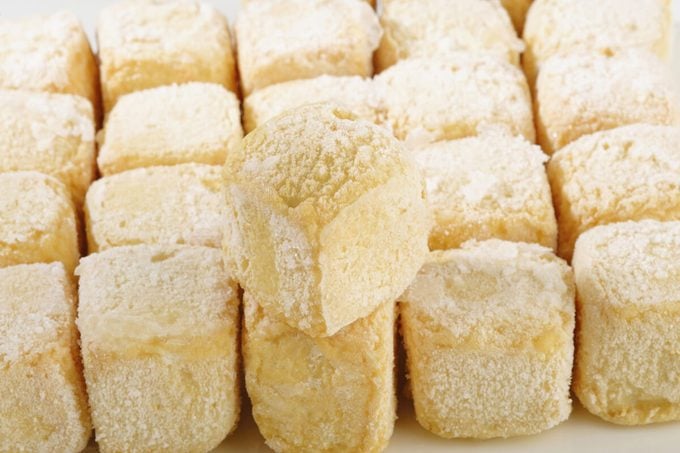
8. You didn’t store it well
If you pulled off a great tofu recipe the first time, but then the meal you made with the tofu left in your fridge was lacking, it may be because you stored it incorrectly. To keep tofu after it’s been opened, cover it with water and keep it in the refrigerator. Switch out the water every couple of days; the unused tofu remains fresh for up to a week. If you’re planning on freezing your tofu, leave it in its original packaging; it will last, frozen for 5-6 months.
With all this in mind, give tofu a try—or another try, if you’ve had less than satisfactory results in the past. There are lots of people out there who discovered they absolutely love tofu…once they learned to cook it right!
